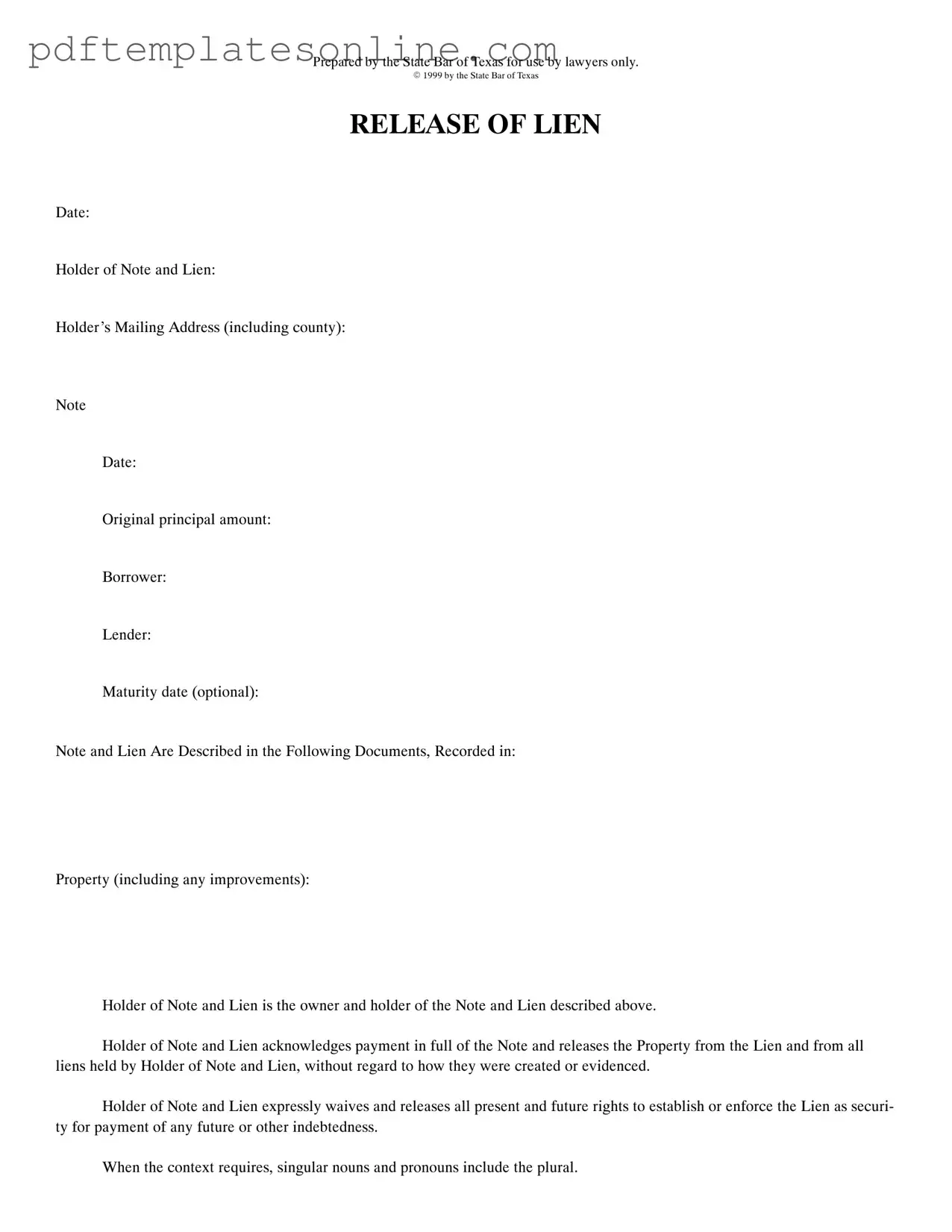Filling out the Release of Lien form in Texas can seem straightforward, but several common mistakes can lead to complications. One major error is failing to include the correct holder of the note and lien. This section must accurately reflect the individual or entity that holds the lien. If this information is incorrect, it can create confusion and may invalidate the release.
Another frequent mistake is neglecting to provide the holder's mailing address. This address is essential for any future correspondence or legal matters. Without it, you may face challenges in communication, which can lead to delays or disputes down the line.
People often overlook the importance of the note date. This date signifies when the original loan was made and is critical in establishing the timeline of the lien. If this date is missing or incorrect, it can complicate the legal standing of the release.
In addition, the original principal amount must be filled out accurately. This amount represents the total borrowed and is crucial for confirming that the lien has been satisfied. An error here could raise questions about whether the debt was fully paid.
Another common oversight is failing to properly describe the property involved. This includes not only the address but also any improvements made to the property. A vague or incomplete description can lead to issues in enforcing the release, as it may not clearly identify what is being released from the lien.
People sometimes forget to include the maturity date, even though it is optional. While it may not seem necessary, including this date can provide additional clarity regarding the timeline of the loan and its repayment, which can be beneficial in future dealings.
Additionally, some individuals do not ensure that the acknowledgment section is completed correctly. This part verifies that the document was signed in front of a notary public. If this step is neglected, the release may not hold up in court, leading to potential legal issues.
Lastly, failing to return the form to the correct address after recording is a common mistake. This step is vital to ensure that all parties have the necessary documentation on file. Not following through with this can lead to confusion and potential disputes regarding the lien's status.
